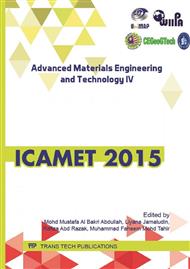p.311
p.314
p.319
p.323
p.327
p.331
p.337
p.342
p.347
Bond-Slip Relation of Pretensioned Concrete Members for Various Tensioning Forces
Abstract:
The bond between prestressing (PS) steel and concrete plays an important role in pretensioned concrete members because the pretension force is directly transferred from PS steel to concrete by cutting or releasing the PS steels at the end of the members. While in capacity design approaches, designing for bond is considered to be a question of adequate strength along the bar length, in performance-based design approaches, the level of deformation as well as bond strength must be known and the bond-slip curves may give enough information. The purpose of this paper is to derive bond-slip curves for various tensioning forces within Korean design Code experimentally. For this purpose several series of tests have been conducted with different cover depths and tensioning forces. A realistic bond-slip curve is proposed which may be the base for more rational design of pretensioned concrete members.
Info:
Periodical:
Pages:
327-330
Citation:
Online since:
May 2016
Authors:
Price:
Сopyright:
© 2016 Trans Tech Publications Ltd. All Rights Reserved
Share:
Citation:


